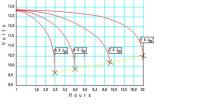 Add My Company
Add My Company
Sign In

Six things you need to know about standby battery management
As more and more remote monitoring is installed on sites ranging from sewerage pump stations and dam level monitors to pump controllers and environmental monitoring systems, so the need for reliable standby power at 12 or 24 V to drive conventional instrumentation and other remote monitoring systems has increased.
In the past, this area of standby power equipment has been dominated either by 12 V systems as used in the access control and security areas, or by computer and general-purpose UPSs. Neither of these classes of equipment is suited to these small remote industrial applications. In such applications parameters such as maximum charge time, minimum standby time, battery life and voltage regulation demands clear specifications to ensure that these installations are fit for purpose. Space and cost are also issues to be addressed during equipment selection.
There is even an inclination by some engineers to simply connect a 24 V d.c. battery directly across a 24 V d.c. power supply to achieve a conveniently simple small standby system.
While specifying and installing such industrial grade systems does not have to be difficult or expensive, there are a number of pitfalls the unwary can easily encounter with the specification and management of small battery standby systems.
This article shows the issues involved and suggests methods to ensure successful equipment selection.
For more information on Six things you need to know about standby battery management talk to Omniflex UK Limited
Enquire Now
List your company on FindTheNeedle.

